"February 2, the dragon looks up" means "the spring returns to the earth and everything recovers, and the year of Furui's auspicious year begins." At the same time, the price of Home Appliances is also "raised up". Recently, a wave of "price hikes" has swept the entire home appliance market, and at the same time, it has beaten many consumers who want to buy currency to be "unprepared". Among them, the price increase of color TV products is the most obvious.
The home appliance industry has set off a wave of price increases since last winter. Whether it is Xiaomi, LeTV, which is known for its high cost performance, or Hisense, Skyworth, a traditional home appliance company, and even companies including air conditioners and kitchenware, all have raised prices.
In November 2016, LeTV, an Internet TV manufacturer, increased some of its 40-inch, 50-inch, and 55-inch super TV models by 100 yuan each, and 65-inch models by 300 yuan each. On February 27 of this year, LeTV also released a price adjustment announcement for some models of super TVs, again raising prices. The same price-increasing Internet TV manufacturer also has Xiaomi, which has adjusted prices three times since 2017, and its 48-inch TV prices have even increased by 30%.
The increase of traditional TV manufacturers is not small. Taking the 50-inch smart TV as an example, data from Jingdong Mall shows that the price of Hisense's series has risen from 2599-3299 yuan to 2999-3499 yuan; the price of Skyworth's series has risen from 2589-3299 yuan to 2589-3599 yuan. Hisense told us: "The entire industry basically adjusted its prices in October last year." The adjustment range varies according to the channel and product sales scale.
Why the home appliance industry collectively set off a wave of price increasesIn addition to televisions, air-conditioning prices have also risen. In December 2016, Midea Air Conditioning, Chigo Air Conditioning, and Hitachi Air Conditioning all issued price increase notices. The retail prices of channel terminals, chain stores, and e-commerce platforms were all raised by 50 yuan to 200 yuan. Gree air conditioners, which have always declared that they will not raise prices, have increased prices to dealers since last winter.
Even kitchen appliance manufacturers have joined this wave of price increases. According to a market researcher, Yitian Group mainly produces kitchenware and small motors, and makes branding for OPP, Huadian, Gree and overseas kitchenware brands. Yitian Group raised channel prices twice in May and December 2016, respectively, with a compound price increase of 15%.
According to data from Yikang, a market research organization, this round of price increases since last winter involved almost all household electrical appliances. The cumulative offline retail price has increased by about 5% -10% year-on-year, and the prices of online high-end products have also increased.
The GF Securities report shows that among the various sub-sectors, the price increase of high-end products and low-end products is higher, while that of mid-range products is limited. The reason is that high-end products are more in line with the trend of consumer upgrades and are favored by consumers; while low-end products have lower prices and the highest cost pressure.
Practitioners and analysts believe that the primary reason for the price increase of home appliances is the rising cost of raw materials. Compared with the first quarter of 2016, copper prices rose 25.35% last week, aluminum prices rose 20.06%, cold rolled coils rose 63.54%, and plastics rose 26.49%. Even this year, copper and aluminum prices have risen by about 10%.
With regard to TVs in particular, the rise in panel prices, which account for 60 to 70% of TV costs, has put pressure on many downstream TV manufacturers. According to data from market research institutions DisplaySearch and Witsview, the latest TV panel quotes have increased from 20% to 60% year-on-year, of which 40-inch, 43-inch, and 48-inch TV panel quotes have increased by around 60%.
An analyst who has been observing electronic components for a long time said that domestic TVs still use liquid crystal panels as the mainstream, but major international panel manufacturers LG and Samsung are undergoing industrial upgrading, the production lines are changing to OLED panels, and the production of liquid crystal panels has been reduced, resulting in tight supply chains. .
"At present, from the perspective of overall market demand, the demand for large-screen TVs larger than 55 inches is growing rapidly, but there is a time gap between the transmission of market demand to upstream producers. Although various companies are now increasing the production line of large-screen panels, But it will take time until the actual mass production. "Hisense said.
The above analysts believe that the panel price has fallen to the bottom price before, and under the support of insufficient supply and demand, the panel price rebounded in a retaliatory manner. Coupled with the recent tense political atmosphere between China and South Korea, the shortage of panel supply may continue. Zhongyi Kang judged that the supply shortage in the panel industry in 2016 led to the increase in panel prices at least until the first half of 2017.
In addition, freight and labor costs are also rising. A person in charge of a small household electrical appliance manufacturer said that the cost pressure of freight and manpower is equivalent to the pressure of rising raw material prices, and the overall cost has increased by 5% to 10%.
Under the pressure of cost, consumption upgrades, home appliance companies still hope to upgrade the brand and improve quality, such as using better panels and newer technologies, which is also one of the reasons for this round of price increases.
Many analysts in the home appliance industry all said that as consumption upgrades, consumers are more and more able to accept products with higher prices and better quality. CCID Research's February 28 report showed that the penetration rate of home grid purchases was close to 20% in 2016. Among users of online appliances, the users who are sensitive to promotions have dropped by 40%. In other words, more and more consumers pay more attention to product quality and service, and do not pursue excessively low prices.
A number of first-tier home appliance brands, including Midea and Haier, have raised prices on high-end product lines. "From consumer feedback, the price increase is transmitted to the consumer side, and consumers can still accept it. Compared with the price, there are more Consumers pay more attention to the feeling and quality of products. "Midea said.
GF Securities Research reported that the rising trend of raw material prices may be difficult to change in the short term. A securities analyst of the home appliance industry said that from the data point of view, the domestic industrial producer's ex-factory price (PPI) exceeded the increase in the consumer price index (CPI), and the price increase was inevitable from the production end to the consumption end.
It is worth mentioning that the general increase in home appliances has attracted regulatory attention. The National Development and Reform Commission's Price Supervision, Inspection and Anti-Monopoly Bureau held a reminder meeting on the price regulation and policy reminder of the home appliance industry on January 9 to interview the heads of major domestic air conditioners, refrigerators, color TVs, washing machines, small appliance manufacturers and major e-commerce platforms. The person in charge of the Price Supervision and Administration Bureau of the National Development and Reform Commission reminded enterprises not to collude with each other on horizontal monopolies or to drive up prices.
Color TV prices are "rising up" Who is good for rising prices?Price increase due to upstream pressure + corporate willingness
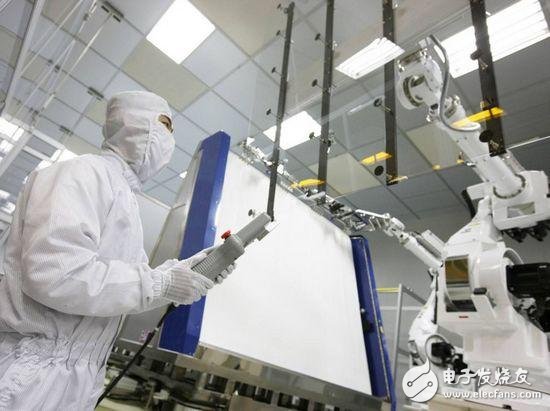
In fact, this wave of color TV price increases has been brewing since the second half of last year, and some Internet brands even adjusted the prices of some of their products a few years ago. For example, LeTV raised the price of each of its 40-inch, 43-inch, 50-inch, and 55-inch models by 100 yuan in November last year, and the price of some 65-inch models was increased by 300 yuan. However, after the Spring Festival, more color TV manufacturers have joined the price increase team, including Xiaomi, who claims to never raise prices, and traditional color TV companies such as TCL.
As the saying goes, "If a wolf turns around, there must be a reason." The reason for this wave of "price increases" is not only the increase in logistics and labor costs, but the most fundamental "reason" is the sharp rise in upstream panel prices.
Senior appliance analyst Liu Buchen analyzed the reasons for the increase in panel prices. He said: "First, the LCD panel price increase is cyclical, and it happened to be at this price increase node in the past two years; second, because of the global The major LCD panel suppliers Samsung and LG upgraded and stopped production of some production lines, which eventually led to a phased supply shortage of LCD panels. In addition, the advance booking of products by the panel giants also caused the LCD panel market to be insufficient. "
"As everyone knows, the profit of the color TV industry is currently at the bottom of the entire home appliance industry. The average profit of about 22% is far from the average profit of 35% -40% of the air-conditioning products, so the color TV industry has the strongest willingness to increase prices." Austria Cui Jilong, senior research manager of Weiyun Display Display Industry Chain, told the author: "The panel price increase of 50% -60% of the total machine cost can be described as 'pushing the whole body', but at the same time, it is also in the hands of color TV manufacturers to support the industry Provides a sufficient reason for price increase, and then satisfies the desire of color TV manufacturers to increase prices.
Rising average prices accelerate product update iterations
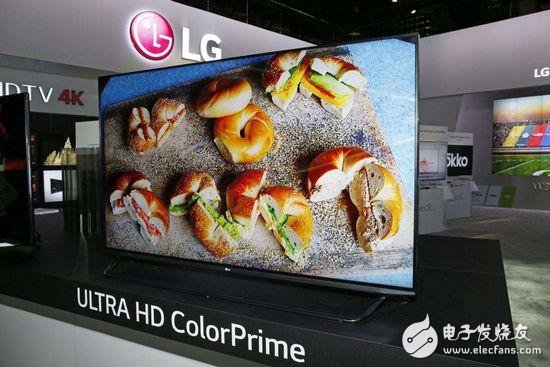
Since the Internet brands have entered the color TV industry, the color TV industry, like a calm lake, immediately set off "waves", "price war" became the "main theme" of competition between enterprises, and "libi paper" has also become the industry's new normal . However, at a time when the cost pressure is huge, the method of relying on the "price war" to occupy the market has become more and more impractical. It also forces manufacturers to focus on the "value war", and the industry may take the opportunity to usher in a new round of industrial upgrading.
Since the beginning of 2017, the prices of small-sized panels that have continued to rise have stabilized, while the prices of large-sized panels have increased with the increase in demand. The explosion of large-size panel prices also proves the strong demand for large-size panels in 2017. Manufacturers will focus more on large-scale high-end products, hoping to strive for more profit space, because compared with almost no profit Small-sized products and large-sized high-end TVs are the core profit of color TV companies.
In addition to promoting the further development of products towards large-screen high-end, the "price increase tide" is also expected to drive the market popularity of new display technologies. "LCD panel prices continue to increase, and OLED TV prices are getting closer to the people. In fact, the price difference between these two products is gradually being narrowed," Liu Buchen told the author. "Enterprises that are based on profit pursuit will turn their eyes to higher prices. Products with new display technology, quantum dots and OLED TVs will be admired by more companies, which will promote the popularity and development of products of the next era. "
Dong Min, general manager of Aowei Cloud Network's intelligent display and digital entertainment business group, also believes that the price increase of color TVs has more advantages than disadvantages for the development of the industry. He said: "The price increase of color TVs is conducive to the operation of the entire industry. The vicious circle of low-price competition has made companies focus more on products and users themselves. "
The price is difficult to drop
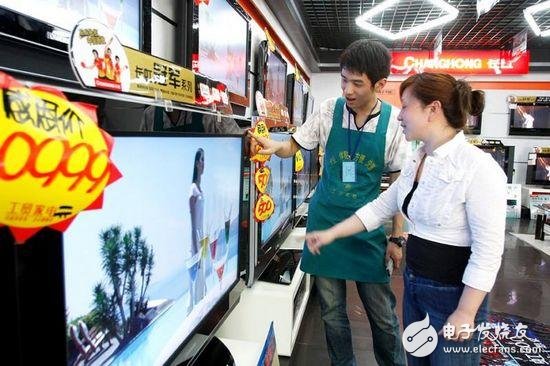
Right now, home appliances companies may be most concerned about how to control the cost of various links and increase product profits. For consumers, choosing the most cost-effective time to buy a color TV is the most urgent task. In response to this problem, experts almost gave the same conclusion, that is, "the sooner the better."
"Because the upstream panel prices continue to be in a rising channel, due to the cost and the strong willingness of companies to increase prices, the price of color TV sets in the first half of 2017 is less likely to fall." However, Cui Jilong also pointed out: "Color TV in the second half of the year The overall price and LCD panel price may fall, which will be determined by the sales volume of color TVs in the first half of the year. In the long run, consumers are advised to purchase as soon as possible. "
Liu Buchen also holds the same view. He said that from the consumer's point of view, it is better to buy a color TV as soon as possible, or choose an activity node like "May Day" and "6 · 18". Some preferential activities, but according to the overall forecast for the whole year, the price of color TV sets will only increase with time.
Conclusion: It can be seen from the above that the price of color TVs is not affected by a certain factor, but the result of the joint efforts of all upstream and downstream industrial chains. The "price increase tide" can be said to occupy "time, geographical advantages, and harmony." At the same time, this wave of "price increases" will hopefully drive the overall upgrade of color TV products, accelerate the elimination of brands without core competitiveness, and promote the healthy development of the industry. Therefore, in the long run, the price increase will play a certain role in promoting the development of the industry and the purification industry.
Domestic chips are estimated to really take off from the home appliance industryA few days ago, Xiaomi finally released its self-developed chip pine cone processor, becoming the second domestic mobile phone manufacturer with a self-developed processor after Huawei. Therefore, the "domestic chip" embarrassing embarrassment has to be pushed into the focus of netizens. All along, I can see from time to time how much progress has been made in domestic chips, but I have never seen the actual results ...
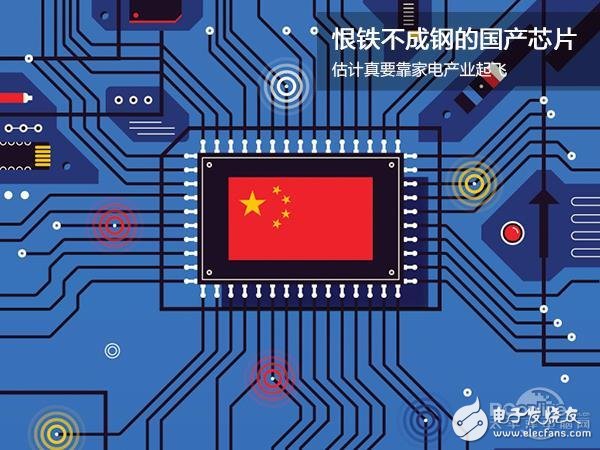
In the field of smartphones, at least Huawei HiSilicon and the current Pinecone can support the face, while on the PC side and server side, it has been almost "unknown". Of course, it is not naive to hope that domestic chips can eat an elephant in one bite, and it must always be done step by step. As it happens, smart home appliances that are now booming may be able to bring new opportunities to domestic chips.
In January 2017, the US Presidential Science and Technology Advisory Committee (PCAST) issued a report entitled "Ensuring the Leadership of American Semiconductors." The report said that the rise of the Chinese semiconductor industry and growing overseas mergers and acquisitions have posed a threat to US companies and national security. The US government imposes restrictions on Chinese related industries.
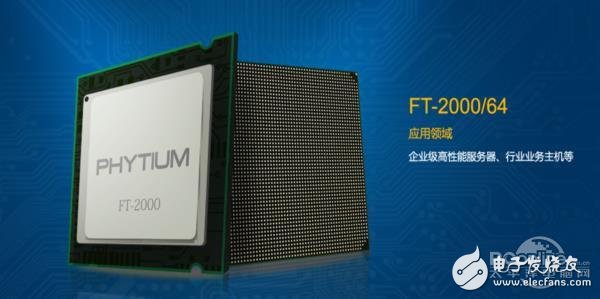
Guangzhou Feiteng codenamed "Mars" chip
The domestic chip industry must continue and must achieve results, otherwise many industries, especially those involving important secrets, will be subject to many restrictions and risks. The dispute between Meizu and Qualcomm last year is a living example. In 2016, Guangzhou Feiteng announced on its official website that the domestically-made chip Feiteng 2000, code-named "Mars," basically tied up with the current E5 type mainstream server chip from Intel, the dominant server chip market.
Unfortunately, the actual performance of the finished product and application of this chip has not been seen ...
In fact, this is the current problem of domestic chips, including the "Loongson" that most people know, and it has always been only known by its name. It makes people feel that domestic chips have always existed in the research institute, and those who can really find deficiencies and make corresponding improvement measures, market-oriented development is very important.

Huawei P10 Plus with Kirin 960
Obviously, from the current situation, Qualcomm is the dominant player in the smartphone field, and HiSilicon is used by Huawei itself, and MediaTek can basically not escape the fate of the low-end; the PC side is even worse, except Intel, AMD, It is estimated that most people can't think of other brands. Therefore, don't participate in these domestic chips first. At present, the most potential is smart home appliances.
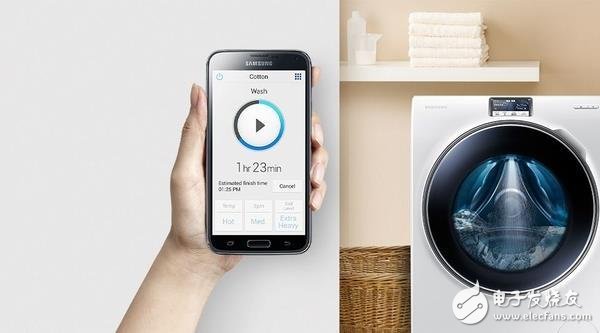
With the deepening of the concept of smart home, TV, refrigerator, washing machine and other commonly used household appliances are almost all developing in the direction of intelligence. On smart TVs, domestic chips, including HiSilicon, have gradually been partially applied, and even Qualcomm has made such attempts. Today, China has become the world's largest home appliance manufacturing country, and home appliances such as air conditioners and refrigerators account for half of the world's total output. Under the trend of smart home appliances, each home appliance product will need to use multiple chips.
At least for now, the chip providers in home appliances are not yet clear, and the giant companies that have not been identified have relevant layouts. At the same time, home appliances are not as demanding on chip performance as computers and mobile phones, nor are they the focus of consumers' attention. As long as they can implement related functions, this is the best opportunity for domestic chips.
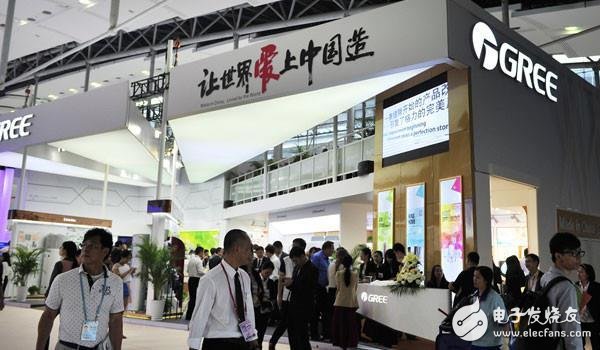
China is the world's largest home appliance manufacturing country
And China is the world's largest home appliance manufacturing country, and naturally has a certain say in the choice of raw materials. If the state can introduce some policies to encourage home appliance manufacturers to adopt domestic chips, in order to achieve a win-win situation for both parties. This will provide a good market-oriented environment for domestic chips, and constantly improve and improve in practice, which will always grow much faster than in the research institute.
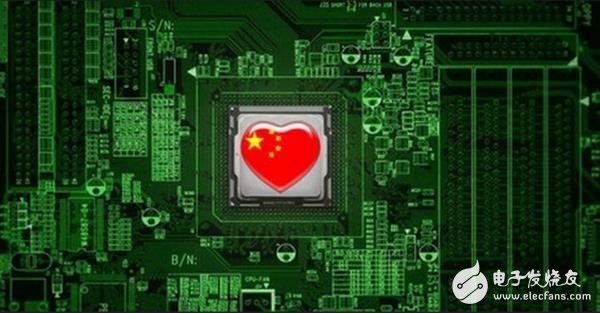
Finally, the chip industry is a high-tech industry after all, and it requires a lot of capital investment. It is not an overnight thing to develop. What's more, there is now pressure from major companies to occupy the market. The status of domestic chips is still awkward. In addition to the major military fields, it really does not involve other fields. It ’s easy to be a keyboard man, but it ’s not easy for anyone to know. I only hope that the development of smart home appliances can really bring some new vitality to the development of domestic chips ...
SHENZHEN CHONDEKUAI TECHNOLOGY CO.LTD , https://www.szfourinone.com